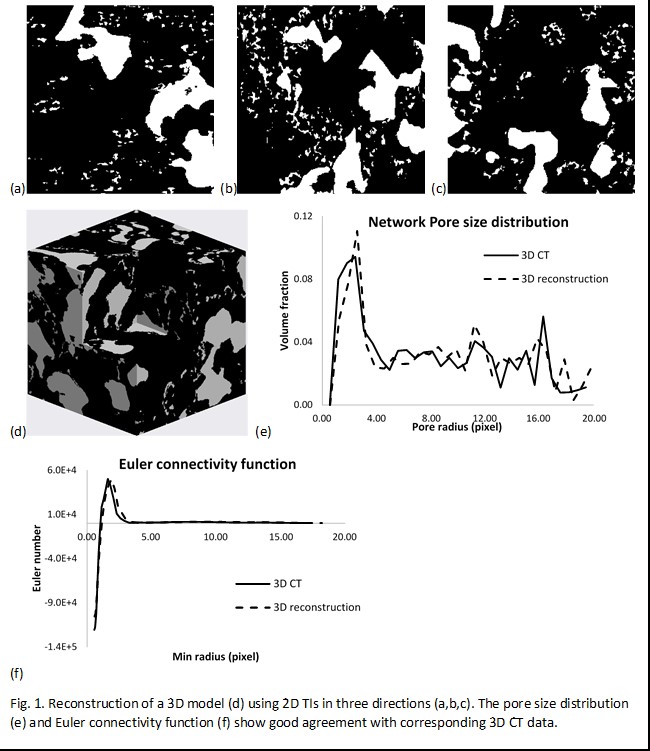Speaker
Description
Accurate characterization of the multiscale pore structure in carbonates reservoirs is a complex but crucial step for pore-scale modelling of the corresponding flow and transport properties. 3D images obtained using micro computed tomography (CT) are only able to capture a relatively narrow range of pore sizes at a given resolution and fail to reproduce cross-scale pore connections. Therefore, reconstruction of 3D models of pore structures based on widely available large high quality 2D images (e.g. SEM) is an attractive alternative. In this study we introduce an Expectation-Maximization global optimization algorithm, inspired by the field of texture synthesis, to generate 3D models from 2D training images (TIs), preferably in different directions. The method is developed for not only granular media, but also more general porous media, in particular carbonates.
The core idea is an iterative refinement of orthogonal patterns for every voxel, which alternates between finding the best matching local patterns from the TI for every voxel (Expectation step) and minimizing the global difference between the best matching and reconstruction patterns (Maximization step). This iterative algorithm preserves much better the continuity of pore and solid structures in all three directions than conventional pixel or pattern based methods. Additionally, we introduce a distance map transformation for both the pore and the solid phases in the binary TIs to enrich their spatial distributions. This enables us to model complex structures with highly variable pore and solid sizes. Furthermore, we identified that the principle component analysis (PCA), which is normally used to reduce computational complexity, results in a significant loss of pore connectivity in the 3D reconstructions. Instead, we have introduced an adapted k-coherence search algorithm, which not only prevents the loss of connectivity, but also reduces the nearest pattern search (Expectation step) complexity to constant time (compared to conventional logarithmic time). Moreover, the core iterative algorithm can be parallelized through multi-thread CPU and can easily be adapted to GPU, hence the computational efficiency of our method is much improved. Our comprehensive tests show that the reconstructed models (e.g. Fig. 1) correctly capture the complex geometrical features (e.g. pore shape, long pore channels and wide range of pore sizes as well as the topology, particularly the connectivity between small and large pores), which is reflected in accurate simulation of single- and two-phase flow properties.

| Acceptance of Terms and Conditions | Click here to agree |
|---|


